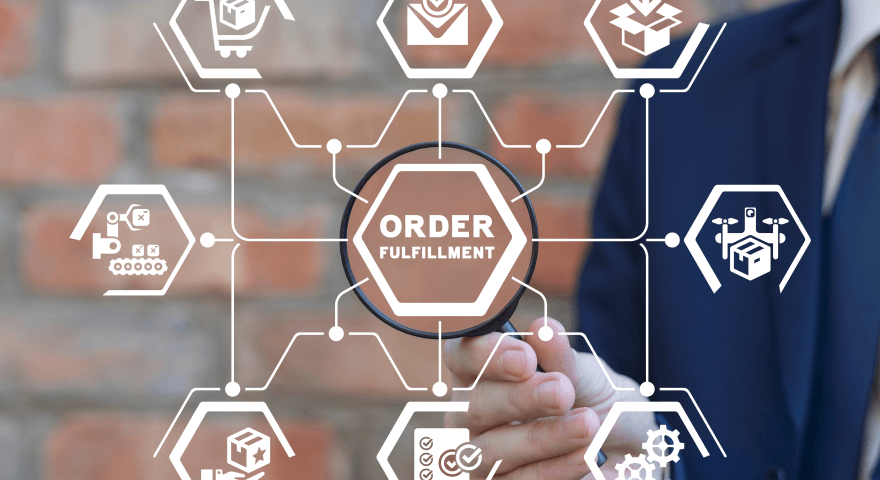The superpower for supply chain improvement
The supply chain is a highly volatile system. Therefore, the changes in the field are not just the frequent, temporary ups and downs of the market but also the movement towards a more digitized, dynamic, and customer-centric approach to business. Keeping up with these changes requires the supply chain management mechanism to keep constantly updating itself. Otherwise, some missing components may soon turn the mechanism into a legacy system that will lag.
So, what are the missing components?
When you run a supply chain, you must always keep up with new market trends and practices. You cannot implement a measure or approach one time, thinking that you are done, and sit back and relax. Instead, it is essential to constantly watch and keep the wheel of progression running through a cycle of the analyze-plan-execute-review process.
But this is easier said than done, especially when some of these processes like unexpected availability issues, inventory cutting or sales, and operation planning are done weekly, monthly, or quarterly. This is very different from production, where lean or six sigma approaches work exceptionally well due to the more frequent and less varied nature.
The main roadblocks in a supply chain manager’s path include the following:
1. Unable to convert insights from analytics into action
There is a gaping abyss between analytics and execution. People have the information they need, but they do not know what to do with it. And no amount of advanced data analytics will be of any use to any business unless the data is converted into actionable insights.
That would be akin to having a superpower but not knowing how to use it. This can become a significant drawback in the path of improvement.
2. Non-clarity on the measures to be taken
Not knowing what to do with the wealth of information you have is one thing. But even worse is being overwhelmed with the information and not coordinating and combining everything into a single, strong strategy with measures and actions clearly defined.
If you keep oscillating between several actions that you think could be taken but cannot hone in on the one you should, there is a high chance that you will end up taking the wrong one simply by overthinking.
3. There are no tactical strategies in place
Say you have analyzed all your information and know exactly what needs to be done. The next step is to execute the plan. And you realize there are no tactical measures defined for executing these grand plans you have.
It is easy to say something like, “We need to reduce stockouts at the end of this fiscal year based on the data and experience from last year.” However, this is a good indicator for non-existing tactical inventory management that allows high availability and low working capital performance.
4. Disconnect between atomic view and KPIs
Many times, your KPIs probably do not consider the operational deviations occurring at the atomic level, e.g., the individual product, causing a disjoint between the overall system and “atomic” performance of a single product. Nonetheless, connecting these two views alone could be a prime factor in making complexity in supply chain management better manageable.
5. Lack of the atomic view of the supply chain objects and processes
While transparency may not always be productive, visibility with a clear “purpose” of decision-making always is. Having a 360-degree view of every component in your supply chain allows you to make informed tactical decisions.
But if you do not have a system that provides such visibility, you will be making most of your SCM decisions in the dark.
6. ML-based forecasting
Machine learning is the current state of deep data-based forecasting. It has the power to give you pretty quickly a detailed map of what to expect and do for every possible scenario.
Unfortunately, the SC is still one of the least enthusiastic when it comes to the adoption of ML. As a result, it ends up missing out on constant development and rectification. And you might guess, a continuous analyze-plan-execute-review process is helping here as well.
7. Execution matters most
Understanding and tracking the decision-making process is critical to managing tactical improvements and strategy execution digitally. In addition, providing the tools to execute manually and automize a flow of transactions to adjust, for example, existing legacy systems, should be essential for any tactical execution management process.
These capabilities of supporting and tracking decision-making and enabling targeted execution define the new superpower for constantly improving supply chains.
How can AIOimpact help you achieve this?
AIOimpact is a new execution management SaaS platform that allows companies to overcome their tactical supply chain improvement challenges smoothly. It employs a bottom-up approach, building on the existing knowledge base and incorporating incoming data to improve your supply chain constantly.
Ironically, the supply chain has the highest potential for profit maximization and sustainability through constant improvement, yet the department executives are least eager to revolutionize. However, this is changing, driven by a strong need for updating and a more experimental approach from company leaders and highly successful companies that have adopted a supply chain-centric strategy.





.jpg)



.png)
